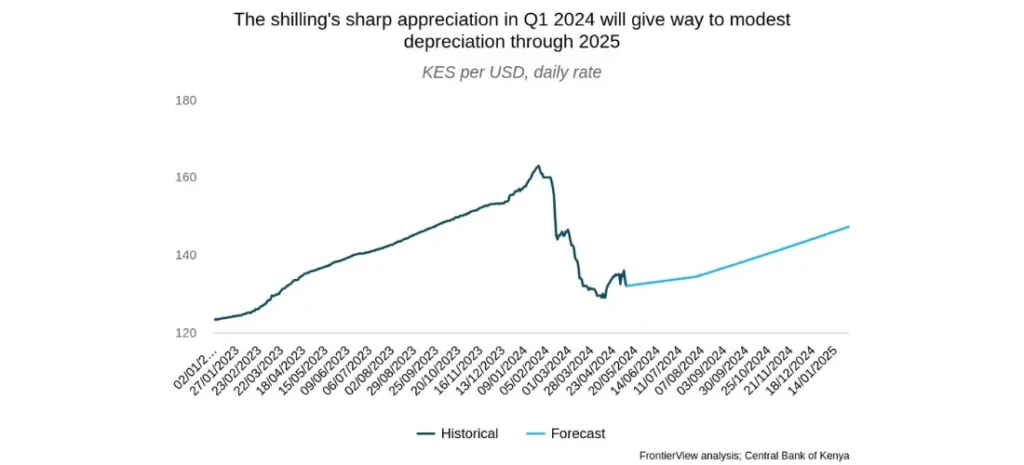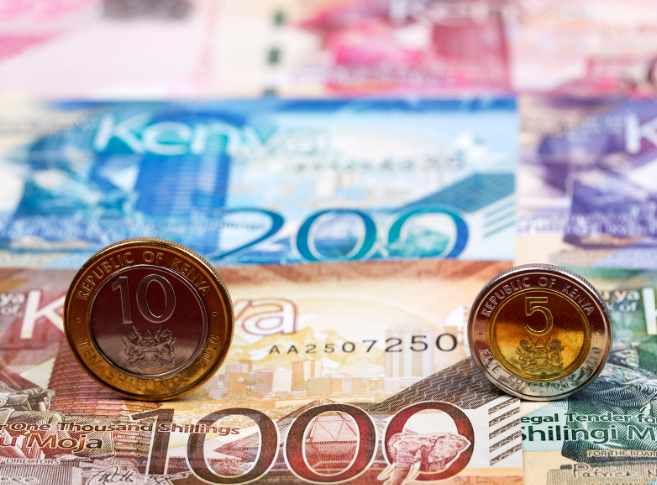
Slowing inflation amid the currency’s improved stability will boost customer sentiment
Multinationals should review their pricing strategies in tandem with their product portfolios to ensure they can capitalize on strengthening customer sentiment and purchasing power amid improved shilling stability and cooling inflation. For example, firms should review their targets and consider offering new products to customers that are trading up to imported and premium products either for the first time or after a long hiatus. This may necessitate incentivizing local partners to pursue these new sources of demand. Looking to 2025, multinationals should ensure their currency assumptions incorporate renewed shilling depreciation. Furthermore, firms should be prepared for recurring—albeit less severe—FOREX shortages that could once again exert financial strain on local partners.
Overview
- The shilling posted its best performance since the early 1990s in Q1, strengthening by 21% from a record low of 163 per dollar in late January, to 129 per dollar in mid-April. The shilling subsequently stabilized, trading between 129 and 132 per dollar in early May.
- This sharp appreciation follows the Central Bank of Kenya’s (CBK) decision to raise its benchmark interest rate to a 12-year high in February, and the government’s restructuring of its external debts in early February 2024 that involved the issuance of a heavily oversubscribed Eurobond.
- Meanwhile, inflation has progressively cooled, slowing from 9.2% YOY in March 2023 to 5.7% YOY in March 2024. Easing food price inflation has been the primary driver of disinflation, although transport inflation has also receded from multi-year highs.
Our View
The currency is expected to remain relatively stable over the coming months, after which it will gradually lose value, ending the year at close to 145 per USD and reaching 155 per dollar by the end of 2025. February’s Eurobond issuance has largely eliminated the risk of a sovereign default this year, which will boost foreign investor sentiment in the coming months. The shilling’s recent gains will also contribute to a drop in the annual average inflation rate from 7.7% YOY in 2023 to 6.5% YOY in 2024, and 5.2% YOY in 2025. However, several factors will drive renewed—albeit moderate—depreciation of the currency through 2025. Despite the receding risks of a sovereign default, high public debt as a percentage of GDP and elevated debt servicing costs will begin to unnerve investors toward the end of 2024. Additionally, interest rate differentials between Kenya and the US will shrink because the US Fed is now expected to postpone interest rate cuts this year. Although FOREX availability in Kenya will improve, shortages will recur intermittently, because the CBK is expected to once again tap tino its foreign currency reserves to slow the shilling’s depreciation.
At FrontierView, our mission is to help our clients grow and win in their most important markets. We are excited to share that FiscalNote, a leading technology provider of global policy and market intelligence has acquired FrontierView. We will continue to cover issues and topics driving growth in your business, while fully leveraging FiscalNote’s portfolio within the global risk, ESG, and geopolitical advisory product suite.
Subscribe to our weekly newsletter The Lens published by our Global Economics and Scenarios team which highlights high-impact developments and trends for business professionals. For full access to our offerings, start your free trial today and download our complimentary mobile app, available on iOS and Android.

